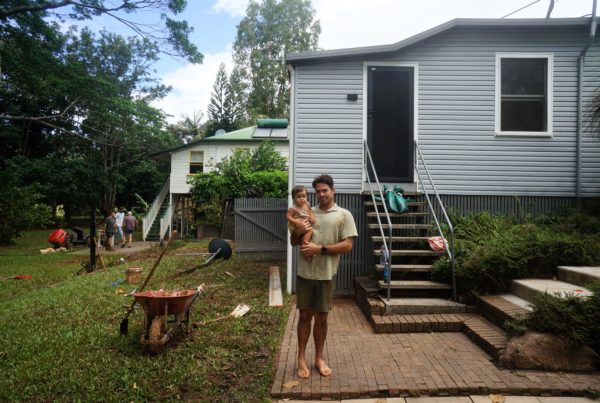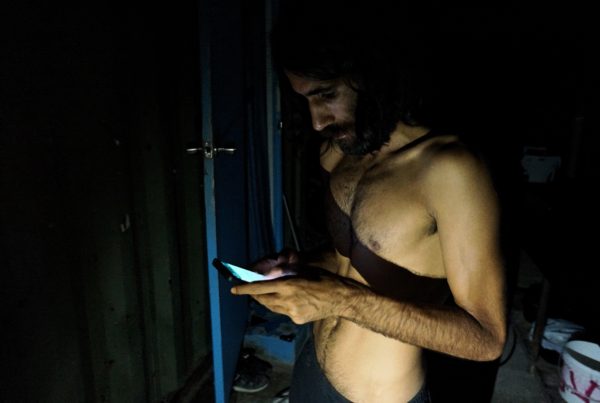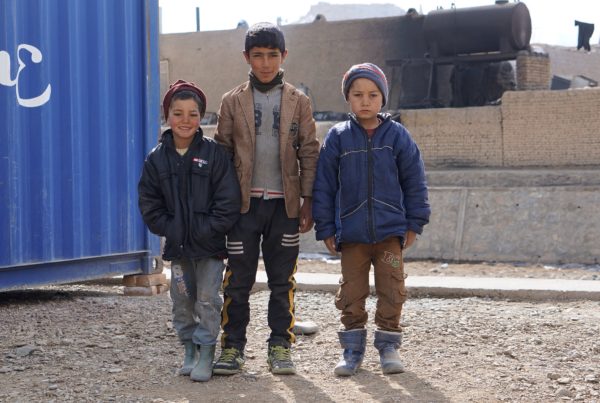This article was first published in World Policy Journal.
I am sitting in the corner of a tent with a group of nomadic people in the dusty highlands of southern Iran and the old men start smoking opium. A man with thick, white hair taps out the charcoal-like remains from a long, ornate pipe and starts compacting the substance together. Meanwhile, he heats a hot poker against the open flame of a gas cooker. When he has pressed the substance into a black button the size of his thumbprint, he applies a hot poker and the black button smokes softly. An alluring, sweet smell fills the room. He sucks up the smoke through a straw and his eyes glaze and shut a little as he enters a dreamy state.
Seeing men handle opium with such nonchalance shouldn’t come as a surprise. After all, we are a short distance from the world’s principal area of opium production: the mountainous border areas of Iran, Pakistan, and Afghanistan, known as the Golden Crescent. Ali tells me the men purchase their opium from Afghanistan for $4 per five grams. According to the United Nations, Afghanistan accounts for an estimated 85 percent of the world’s opium production, most of which is trafficked through Iran, the main transit point connecting Afghanistan and Pakistan to Europe. However, much of the opium trafficked into Iran never reaches Europe but is consumed domestically. According to Amnesty International, Iran is becoming a source country for, “the clandestine manufacture of methamphetamine, some of which is consumed domestically, but increasing amounts are trafficked to Malaysia, Indonesia, and other countries in Asia.”
I am perplexed by the men’s blasé attitude to smoking an illicit drug in front of their families and me, a complete stranger. Ali tells me smoking opium among the elderly in this community is socially permissible.
“It helps them with their aches and pains. When they were younger it was more acceptable.”
I notice that only the older men are smoking; the younger men sit to the side and watch.
“They smoke it every evening,” Ali says. “For four or five hours. Would you like some?”
I decline the generous offer. By the time the men leave the tent it’s almost midnight; their eyes are red-rimmed and their movements drowsy.
Perhaps one explanation for my astonishment that evening lay in the assumption that an Islamic Republic would have strict drug laws and, therefore, less illicit drug-use. In some ways, I assumed correctly. The Iranian government is currently building a 3-meter wall with trenches and barbed wire along 700 kilometers of Iran’s eastern border with Afghanistan and Pakistan. Producing or trafficking drugs into Iran can be punishable by death, depending upon the quantity of drugs or the number of offences committed. About 80 percent of Iran’s death sentences are for drug trafficking offences and it is believed that in 2015 Iran executed at least 964 people. Amnesty International reports that many of these sentences are handed down after grossly unfair trials and there are even secret mass executions inside Iranian prisons.
There is also concern that the Iranian government has made false accusations of drug-related crimes to obscure politically motivated arrests and executions. Members of the Baluch ethnic group have accused the Iranian government of fabricating drug smuggling charges against Baluch people, in some instances, to punish the general Baluch population for attacks by armed opposition groups. The Baluch region acts as a trade route for drug smugglers from Afghanistan and is a province that has been mired by insurgency.
Iran’s extreme measures to battle drug trafficking are controversial but play a pivotal role in protecting Europe from the drug trade. In 2012, Iran accounted for 74 percent of the world’s opium seizures and 25 percent of the world’s heroin and morphine seizures. Over the past two decades, these operations have been financially supported by the European Union, countries like Canada, Germany, the United Kingdom, and France, as well as the United Nations Office on Drugs and Crimes (UNODC). More recently, many countries (including the United Kingdom) have chosen to withdraw their support due to Iran’s policies of executing alleged drug traffickers; however, UNODC continues to provide millions of dollars of funding.
While Iran’s policies prevent a huge amount of drugs from reaching Europe, the people most at risk of punishment are usually the disadvantaged: the impoverished, members of ethnic minorities, youth offenders, and particularly Afghans crossing the border. Harvesting poppy crops in Afghanistan employs nine times as many people as wheat crops and yields higher returns. However, the illicit trade is no doubt contributing to increased insecurity in the country. Opium cultivation in Afghanistan continues to surge as armed groups, such as the Taliban, use it to fund their conflict with the Afghan government and win support from the local people. According to Amnesty International, there may be up to 4,000 Afghan nationals on death row in Iran for drug smuggling. Meanwhile, the drug lords responsible for producing and arranging the trafficking of drugs often avoid arrest and prosecution. Peace, stability, and prosperity in Afghanistan would reduce opium production and ease the pressure on Iran to combat trafficking. However, considering the current political and security situation in Afghanistan, the likelihood of achieving this appears miniscule. In this regard, Iran and America may find common ground in their respective wars on drugs.
Despite its harsh stance on drug trafficking, Iran has one of the world’s highest consumption rates of illegal narcotics. Opium is considered a traditional drug in Iran, used for medicinal and recreational purposes, but nowadays young people are starting to use crack, heroin, hashish, cocaine, and methamphetamines. Some sources say over 2 percent of the adult population, almost 4 million people, are users; other sources suggest the number could be 10 million or more. Iran has the fourth-highest rate of drug-related deaths in the world and the majority of the over 21,000 known Iranian HIV/AIDS cases in Iran resulted from drug-related needle sharing. Iran’s drug problem has contributed to an upsurge in criminal violence and corruption. More than 3,500 Iranian law enforcement and security personnel have died in clashes with heavily armed drug traffickers over the last two decades. Drug users are often poor, unemployed, young men and the rise in addiction rates has been linked to the economic strife in the country and high youth unemployment rates; but drug users, particularly of crystal meth, are increasingly from the middle and upper class of Iran as part of a growing party scene.
The government has reacted to public health issues by implementing demand and harm reduction programs which include distribution of clean needles to injecting drug users, distribution of condoms to sex workers, methadone substitution programs, and a system of addiction treatment. The use of harm-reduction policies to manage the HIV epidemic earned Iran the praise and recognition of the international community, including the World Health Organization. There are now more than 6,000 methadone clinics as well as numerous programs of support for drug addiction that are judged to assist millions of people. However, in recent years these services have been mainly funded by international NGOs due to the economic sanctions that have restricted the nation from pursuing social welfare programs.
Nevertheless, it seems that Iran, like many countries around the world, faces regular domestic debate regarding the best way to balance enforcement and treatment. Drug addiction and drug use is still a crime in Iran and thousands of drug users suffer lashings and imprisonment for small amounts of drug possession. Street addicts in Tehran are periodically collected and sent to compulsory treatment centers. Sixty to 70 percent of the prison population have been charged with drug-related offences and yet incarcerated drug users are offered harm reduction services and many of Iran’s 28 provinces provide after-care centers for prisoners returning to the community. According to John Calabrese of the Middle East Institute, drug users who voluntarily seek treatment will be exempted from punishment; however, this approach is not necessarily used throughout Iran and differences may arise between more liberal areas such as Tehran and provinces such as Baluchistan. This paradoxical approach to treating drug addiction as both a health problem and a criminal problem is counterproductive. It is clear that the criminalization of drug use has not stopped people taking drugs and, in fact, punishes those most in need of help rather than those responsible for large-scale production and distribution. Approaches to drug use and addiction should address the issue for what it is, a health problem, and be reflected in more policies such as Iran’s harm reduction programs.


